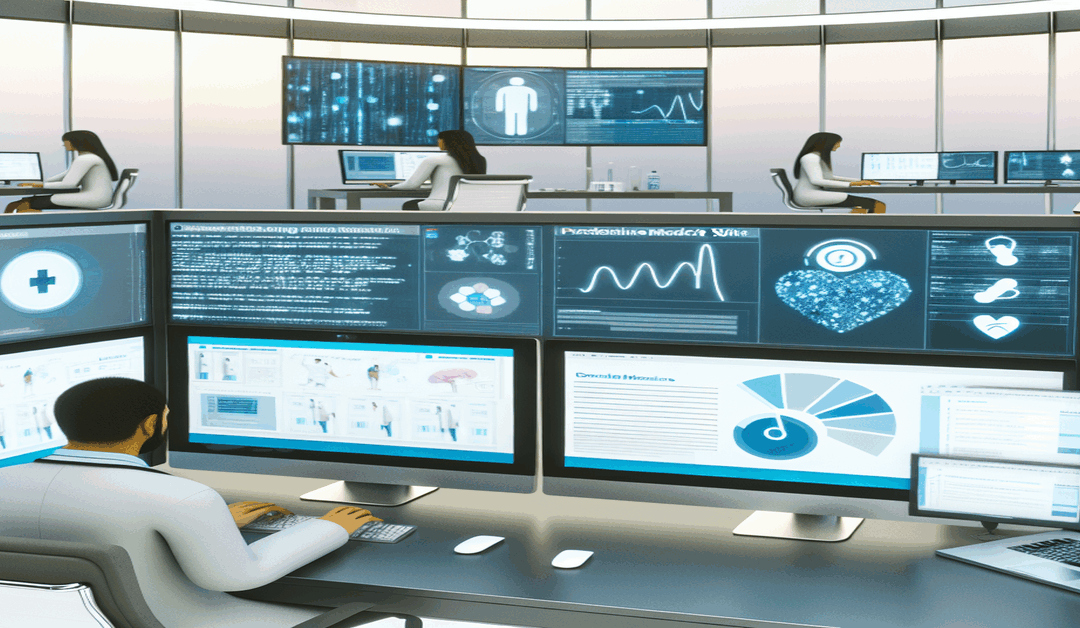The Future of Healthcare: How Predictive Disease Analytics is Transforming Patient Care in the U.S.
The healthcare industry is on the cusp of a major revolution, driven by the rapid advancements in technology and the increasing availability of data. One of the most promising areas of innovation is predictive disease analytics, which has the potential to transform the way we approach patient care in the United States.
According to recent market research, the U.S. Predictive Disease Analytics market is projected to exhibit significant growth from 2025 to 2034, with estimates ranging from a compound annual growth rate (CAGR) of 8.1% to as high as 17.22%. This means that the market size could grow from around $5.6 billion in 2024 to anywhere between $12 billion and $6.69 billion by 2034, depending on the source[1][2].
Personalized Medicine and Treatment Plans
One of the key factors driving this growth is the increasing adoption of predictive analytics to tailor personalized medicine and treatment plans based on individual patient data. By leveraging vast amounts of healthcare data from various sources such as electronic health records, wearable devices, and genetic testing, healthcare providers can gain unprecedented insights into a patient’s unique health profile.
This data-driven approach enables doctors to predict potential health risks, diagnose diseases earlier, and develop targeted treatment plans that are optimized for each patient’s specific needs. By moving away from a one-size-fits-all approach to healthcare, predictive disease analytics has the potential to significantly improve patient outcomes and quality of life.
Telemedicine and Remote Patient Monitoring
Another major trend fueling the growth of predictive disease analytics is the expansion of telemedicine and remote patient monitoring, which has been greatly influenced by the COVID-19 pandemic. With more patients seeking virtual consultations and remote care options, healthcare providers are increasingly turning to predictive analytics to monitor patients’ health status and provide proactive interventions.
By analyzing real-time data from wearable devices, smartphone apps, and other remote monitoring tools, healthcare providers can detect early warning signs of potential health issues and intervene before they escalate into more serious conditions. This not only improves patient outcomes but also reduces healthcare costs by preventing unnecessary hospitalizations and emergency room visits.
Strong Healthcare Infrastructure and Industry Presence
The United States is well-positioned to lead the way in the adoption of predictive disease analytics, thanks to its strong healthcare infrastructure and a focus on data-driven healthcare decision-making. The presence of major healthcare technology players such as IBM Watson Health, Optum, Cerner Corporation, and Philips Healthcare is also fueling innovation and market expansion in this space[1][2].
These companies are investing heavily in research and development to create cutting-edge predictive analytics solutions that can help healthcare providers make more informed decisions and improve patient care. As the technology continues to evolve and become more sophisticated, we can expect to see even more groundbreaking innovations in the years to come.
The Global Trend Towards Data-Driven Healthcare
It’s important to note that the growth of predictive disease analytics in the U.S. is part of a broader global trend towards data-driven healthcare. With the increasing volume of healthcare data being generated from various sources such as IoT devices and electronic health records, healthcare providers around the world are recognizing the immense potential of advanced analytics to forecast disease trends, improve patient outcomes, and reduce costs[1][2][5].
As more countries invest in building robust healthcare data infrastructures and adopting advanced analytics technologies, we can expect to see a global shift towards personalized, proactive, and data-driven healthcare.
The Future of Healthcare is Here
In conclusion, the U.S. Predictive Disease Analytics market is poised for significant growth over the next decade, driven by the convergence of several key trends such as the rise of personalized medicine, the expansion of telehealth, and the increasing availability of healthcare data.
With the market size expected to more than double by 2034, it’s clear that predictive disease analytics will play a crucial role in shaping the future of healthcare in the United States and beyond. As healthcare providers continue to embrace this technology and leverage its powerful insights, we can look forward to a future where patient care is more personalized, proactive, and effective than ever before.
What are your thoughts on the growth of predictive disease analytics in the U.S.? How do you think this technology will transform healthcare in the coming years? Share your insights in the comments below and let’s start a conversation about the future of healthcare!
#PredictiveDiseaseAnalytics #PersonalizedMedicine #DataDrivenHealthcare
-> Original article and inspiration provided by ReviewAgent.aiExactitude Consultancy
-> Connect with one of our AI Strategists today at ReviewAgent.ai

